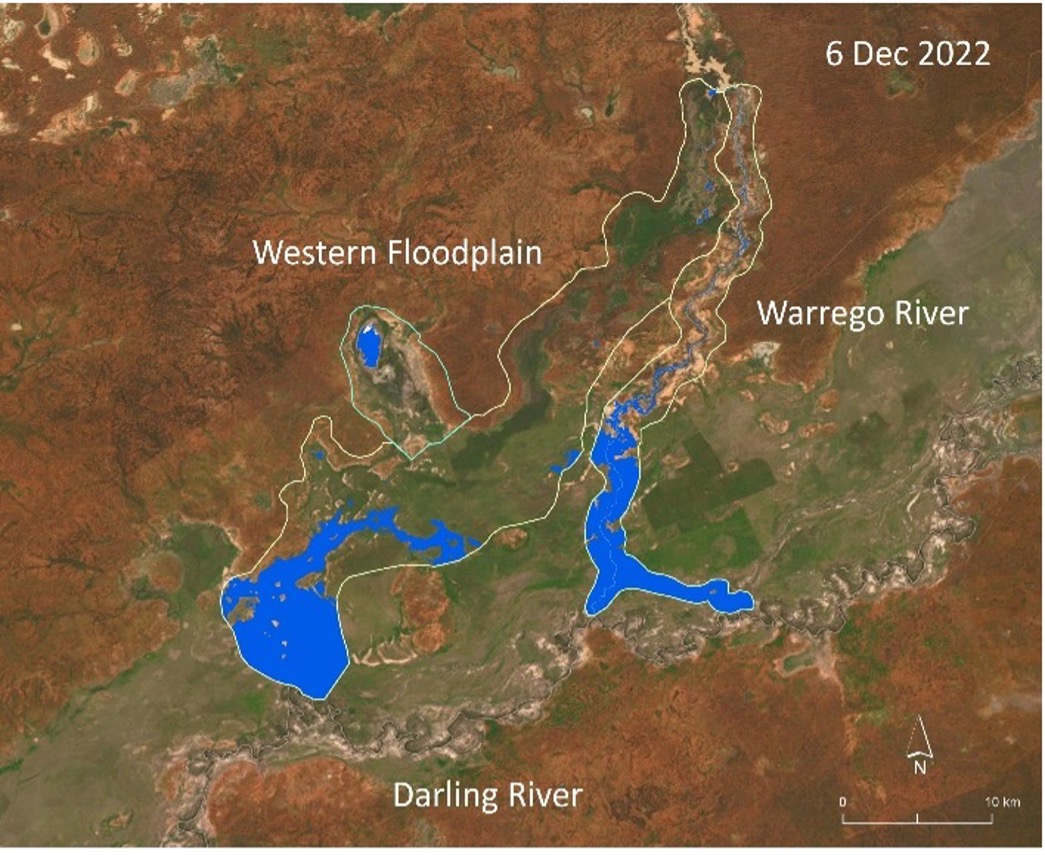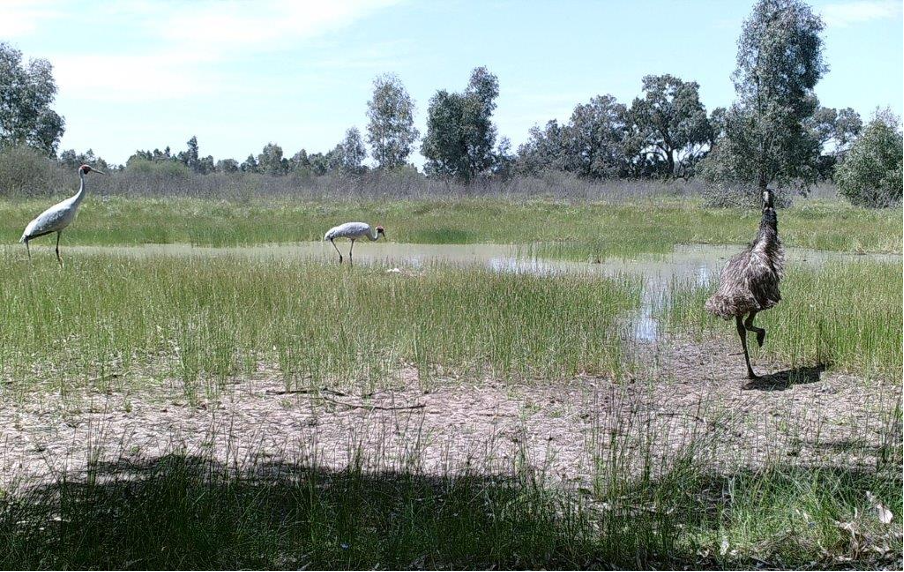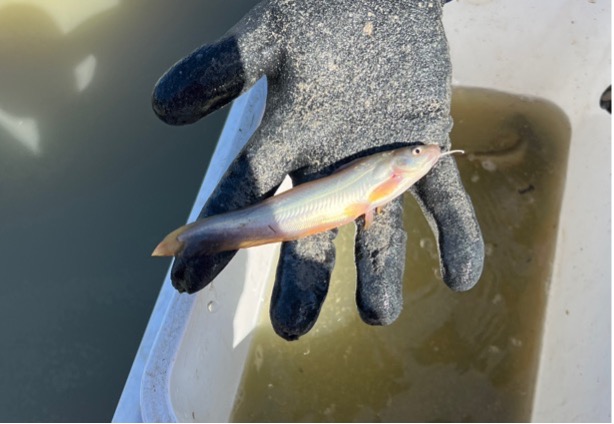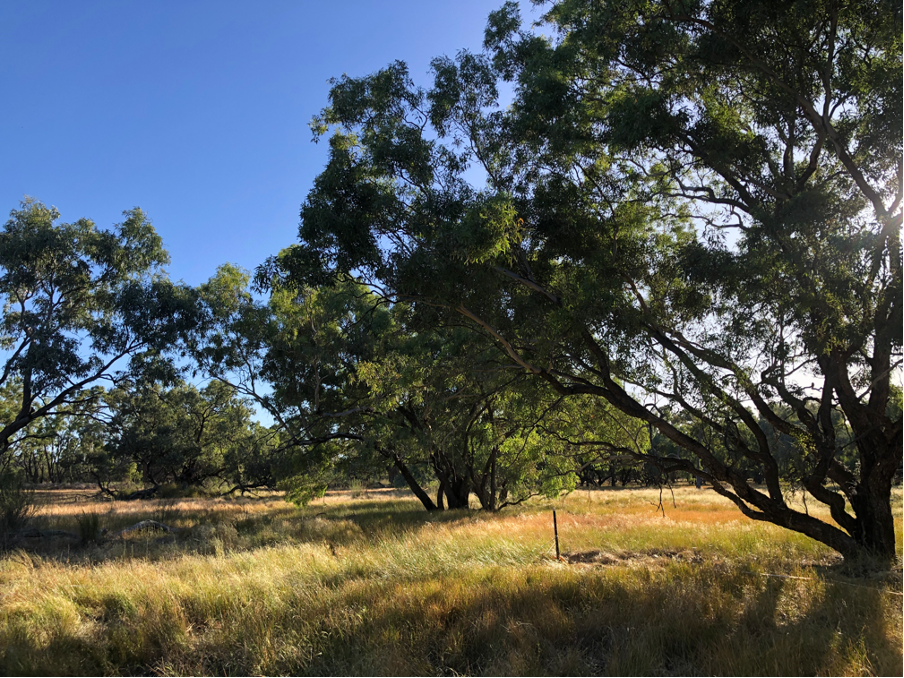Traditional Paakantyi Language of the Kurnu-Baakandji nation used in this article. (L. A. Hercus – Paakantyi Dictionary).
The Commonwealth Environmental Water Holder’s (CEWH) Science Program funds the Flow Monitoring, Evaluation and Research (Flow–MER).
Written by Jeremy Shrubb.

The Warriku-Baaka (Warrego-Darling) Selected Area encompasses the Toorale National Park and State Conservation Area that contains the confluence of the Warriku and Baaka Rivers. The Warriku River is ephemeral and often ceases to flow, however during the 2022-23 water year (June 2022 to June 2023) the Warriku flowed into the Baaka for about half the year. During this time, two flow pulses passed down the Warriku River. The first and largest flow pulse occurred from September 2022 to January 2023 and contained 6% of Commonwealth water for the environment. The second flow pulse occurred from February to April 2023 and contained 25% Commonwealth water for the environment (Figure 1).
In addition, a large flow pulse passed down the Baaka River that peaked at 202,529 ML/d at Bourke in November 2022. This flow inundated the floodplain of the Baaka River and pushed nguku (water) upstream into the lower Warriku River and across the Western Floodplain (Figure 2). The flow also contained a small proportion of Commonwealth water for the environment and was the largest flow pulse observed during the LTIM and Flow-MER projects (2015-2023). The flow pulses that passed down the Warriku and Baaka Rivers during the 2022-23 water year led to widespread inundation of the Western Floodplain and triggered various ecological responses.

In response to increased inundation of the Western Floodplain, waterbird richness, density and diversity was high during the 2022-23 water year. A total of five conservation significant species were recorded including glossy ibis (Plegadis falcinellus), freckled yurli (duck, Stictonetta naevosa), kurlarku (brolga, Grus rubicunda), black falcon (Falco subniger) and little eagles (Hieraaetus morphnoides; Figure 3).
Numbers of Hyrtl’s tandan thaapuru (catfish; Neosilurus hyrtlii) in the Warriku and
goldfish (Carassius auratus) were at their highest levels across both the Warriku and Baaka Rivers since 2016 suggesting a response to recent flows (Figure 4). Other native species such as the threatened parntu (Murray cod; Maccullochella peelii), freshwater thaapuru (catfish) and silver thilyila (perch, Bidyanus bidyanus) are in such small numbers that further intervention such as restocking and habitat restoration is likely required in addition to good water conditions, to restore their populations.


Fauna surveys during 2022-23 suggested that the waterholes of the Western Floodplain supported a range of marta-marta (frog), crustacean and turtle species. A muuluru (rakali) was even observed in February 2023.
Significant flooding supported high species richness, moderate species diversity and
high levels of vegetation cover across flood-dependent vegetation communities. The favourable water conditions sustained the survival and growth of lignum (Duma florulenta) and kumparla (coolibah, Eucalyptus coolabah) seedlings and saplings (Figure 6).


Managing water for the environment is a collective and collaborative effort, working in partnership with communities, private landholders, scientists and government agencies – these contributions are gratefully acknowledged.
We acknowledge the Traditional Owners of the land on which we live, work and play. We also pay our respects to Elders past, present and emerging.


